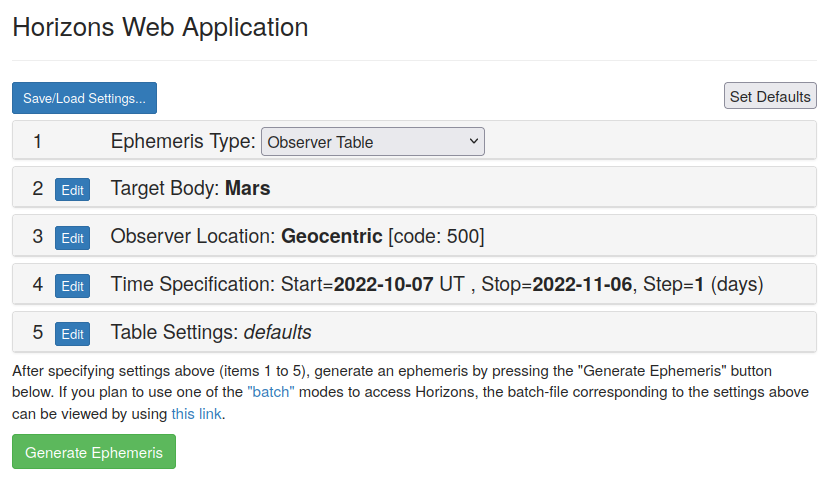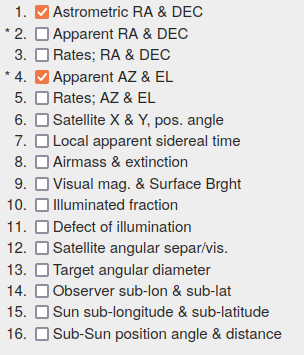Spot The Spacecraft
Oct 10, 2022
The Lucy spacecraft is flying by the Earth, and you may be able to #SpotTheSpacecraft!

During most of the spacecraft’s approach it will be hidden by the glare of the Sun. However, just before closest approach, there will be a brief period (1) where Lucy will cross the terminator and travel over the nighttime side of the Earth while still being illuminated by the Sun. Then the spacecraft will pass into the Earth's shadow, disappearing from view. Lucy will reemerge from shadow (2) and be visible by observers with binoculars. As Lucy rapidly returns to deep space (3) it may be visible with a telescope for another day (or more with a large telescope).
Learn more about where and when to look, see the sections below, and if you can snap a photo or movie of Lucy make sure to share it online with the hashtag #SpotTheSpacecraft. Note: As spacecraft reflect light in complicated ways, all brightness estimates are approximate.
Learn more about the Earth Gravity Assist here.
(1) Before Closest Approach
- Where: North Western Australia, Timor-Leste and parts of Indonesia
- When: Oct 16 ~10:55 until 11:02 UTC (~6:55pm AWST or 8:25pm ACST)
- Equipment needed: None, visible to the naked eye
- Estimated Maximum Brightness: 1st-2nd magnitude
Right before closest approach, Lucy will briefly emerge from the Sun’s glare and be visible over North Western Australia. As Lucy will only be around 490 miles (790 km) from Earth, it will be move rapidly across the sky. It is expected to rise in the West and become visible to the naked eye around 10:55 UTC. It will brighten rapidly as it travels East across the sky until it passes into the Earth’s shadow and disappears from view at 11:02 UTC. At its brightest, Lucy is expected to approach 1st magnitude, rivaling the brightest stars. Lucy will likely be brighter on the western side of the viewing region because that is the side facing the Sun.
As Lucy is very close to the Earth at this point, the location in the sky will be very sensitive to your location. See the instructions below to use JPL Horizons to find exactly where Lucy will be from your location.
(2) When Lucy Emerges from the Earth’s Shadow
- Where: Western North America
- When: Oct 16 11:26 UTC (4:26am PDT, 5:26am MDT, 1:26am HST)
- Equipment needed: Binoculars or a telescope with a wide field of view
- Estimated Maximum Brightness: 6th-7th magnitude
Lucy will be in the Earth’s shadow at its closest point to the Earth at an altitude around 220 miles (350 km) and will not be visible. However, at 11:26 UTC Lucy will emerge from the shadow of the Earth. As Lucy will be over 4300 miles (almost 7000 km) from Earth by that time it will be substantially dimmer, likely 6th-7th magnitude, meaning that it will no longer be visible with the naked eye and will require binoculars or a telescope with a wide field of view. Lucy will likely be more visible on the Eastern side of the viewing region, as that it the side of the spacecraft facing the Sun.
To find where to look for Lucy from your location, see the instructions below on how to use JPL Horizons.


(3) As Lucy Flies Away from the Earth
- Where: Globally
- When: Generally after ~11pm local time Oct 16 and beyond
- Equipment needed: A telescope
- Estimated Brightness: 12th to 16th in the 24 hours following closest approach, dimming another 2 magnitudes every 24 hours after that.
After the Earth Gravity Assist, Lucy will continue to rapidly move away from the Earth. With a 5-6 inch telescope observers may be able to see Lucy as it continues to retreat from Earth in the 12 to 24 hours following closest approach, and with a larger telescope it may be possible to image Lucy for longer.
Precise coordinates will be crucial to viewing Lucy at this point, so please refer to the instructions below on how to use JPL Horizons.
Horizons Instructions
To find Lucy in the sky you will need to know where it is either in the celestial sphere from your position (its right ascension and declination), or its position relative to your horizon (the azimuth and elevation). You can get all of those coordinates from the JPL Horizon Web Application.
When you open up the Horizons Web Application you will see a screen like below:

To find where Lucy will be from your location:
- Select the Ephemeris Type: Select Observer Table from the drop-down menu.
- Select the Target Body: Lookup Lucy in the search bar. Select MB: Lucy (spacecraft).
- Select your Observer Location. Search for your location by name or by longitude, latitude, and altitude.
- Select the time specification, either in UTC time or with the correction for you local time with a timezone correction (e.g. UTC+6 is MDT).
- Edit the Table settings. Select RA & DEC and/or Apparent AZ & EL to get the location of the spacecraft on the sky. Note Horizons does not have a magnitude estimate for Lucy.

The select the Generate Ephemeris Button and scroll down past the information about the Lucy mission to get your output.
Example 1: To see the spacecraft in Broome, Australia, right before closest approach

Gives the output:
*******************************************************************************
Date__(UT)__HR:MN R.A._____(ICRF)_____DEC Azi____(a-app)___Elev
*********************************************************************
$$SOE
2022-Oct-16 10:55 A 15 34 23.97 -20 33 29.3 253.488386 17.988048
2022-Oct-16 10:56 A 15 44 46.51 -21 24 52.1 253.108642 20.309945
2022-Oct-16 10:57 A 15 58 37.16 -22 31 08.8 252.576648 23.446994
2022-Oct-16 10:58 A 16 18 54.85 -24 02 07.9 251.735171 28.067977
2022-Oct-16 10:59 A 16 53 31.35 -26 15 49.0 250.099490 35.869180
2022-Oct-16 11:00 A 18 08 51.54 -29 17 27.8 245.096769 52.188399
2022-Oct-16 11:01 At 21 21 25.95 -25 04 25.1 133.855932 79.601955
2022-Oct-16 11:02 A 00 37 05.92 -03 29 30.3 82.347523 32.473879
$$EOE
*******************************************************************************
The spacecraft will cross much of the sky in 7 minutes
Example 2: To see the spacecraft in Boulder, Colorado, United States, right after the spacecraft emerges from the Earth’s shadow

Gives the output:
*******************************************************************************
Date__(UT)__HR:MN R.A._____(ICRF)_____DEC Azi____(a-app)___Elev
*********************************************************************
$$SOE
2022-Oct-16 11:26 m 01 56 29.57 -00 36 52.8 250.563745 20.896148
2022-Oct-16 11:27 m 02 06 57.41 +00 42 33.8 249.819579 23.517637
2022-Oct-16 11:28 m 02 16 49.20 +01 56 56.9 249.096885 25.969026
2022-Oct-16 11:29 m 02 26 06.75 +03 06 24.0 248.395412 28.257197
2022-Oct-16 11:30 m 02 34 51.95 +04 11 06.4 247.714949 30.390183
2022-Oct-16 11:31 m 02 43 06.74 +05 11 18.3 247.055313 32.376693
Example 3: To see the spacecraft in Tokyo, Japan, as the spacecraft retreats from Earth

Gives the output:
*******************************************************************************
Date__(UT)__HR:MN R.A._____(ICRF)_____DEC Azi____(a-app)___Elev
*********************************************************************
$$SOE
2022-Oct-16 11:26 04 51 59.63 +01 20 42.2 84.719568 -4.946814
2022-Oct-16 11:56 05 45 07.19 +14 17 04.2 70.926419 -1.805999
2022-Oct-16 12:26 r 06 06 01.81 +17 48 24.4 69.464890 2.067997
2022-Oct-16 12:56 m 06 17 27.20 +19 28 54.4 70.737078 6.615341
2022-Oct-16 13:26 m 06 24 36.26 +20 28 31.3 73.025573 11.603584
2022-Oct-16 13:56 m 06 29 24.80 +21 08 18.1 75.791484 16.906812
Lucy rises a bit before 12:26 UTC time (before that the elevation is negative). The “r” marker indicates when the spacecraft will rise from your location.
Banner Image: A snapshot of Lucy’s Journey, Episode 7. CreditL NASA/GSFC